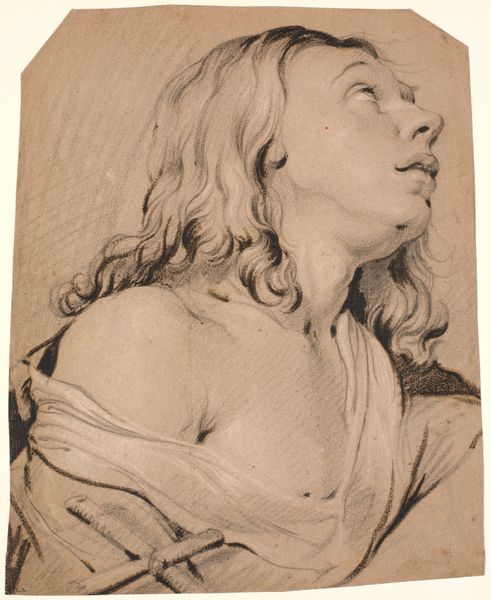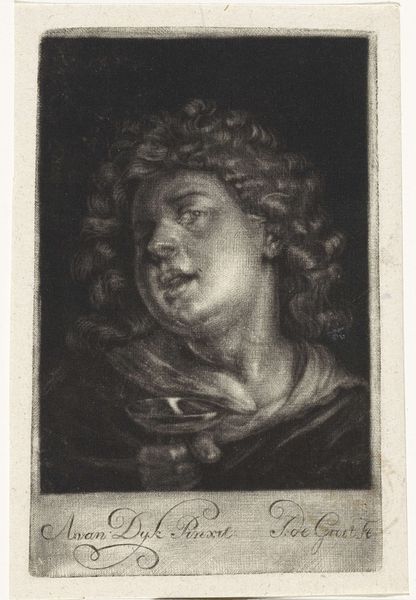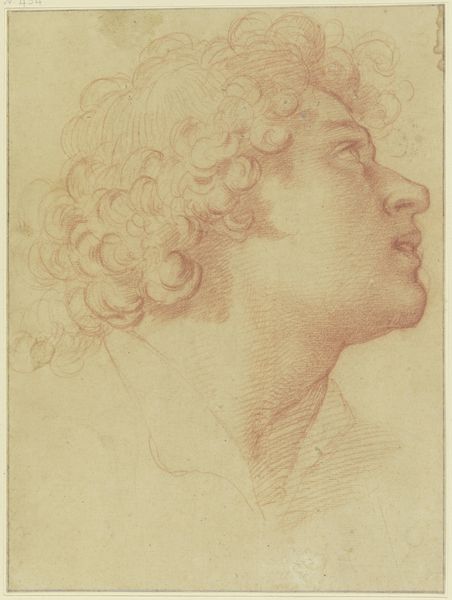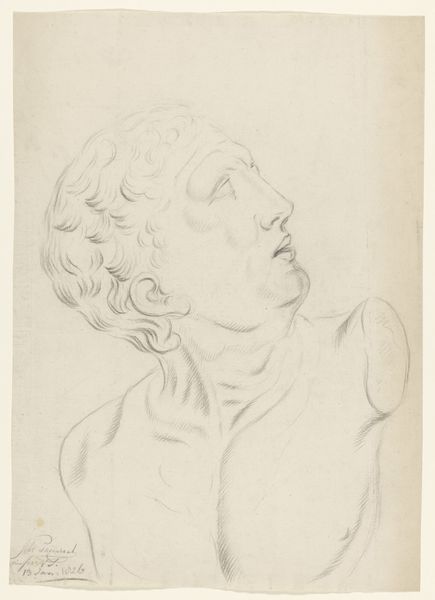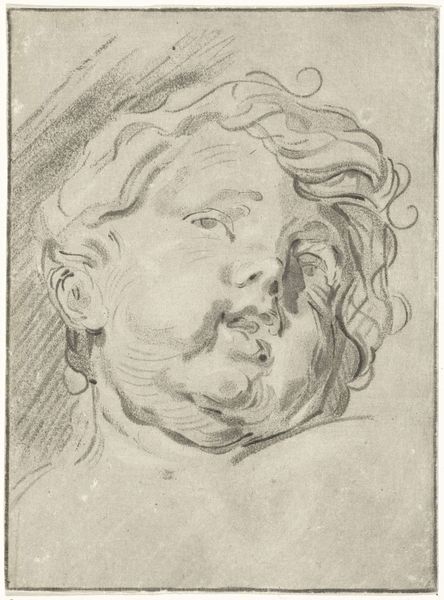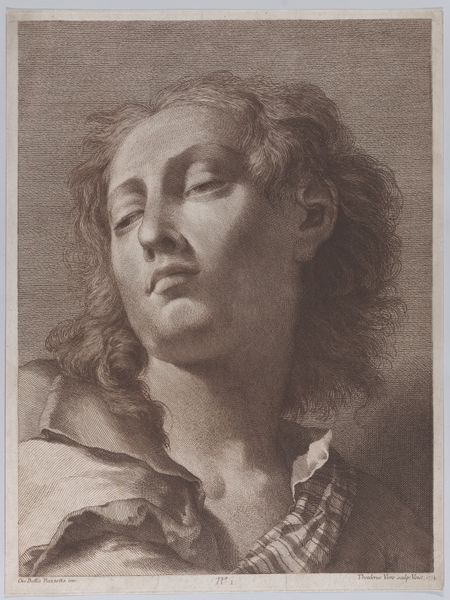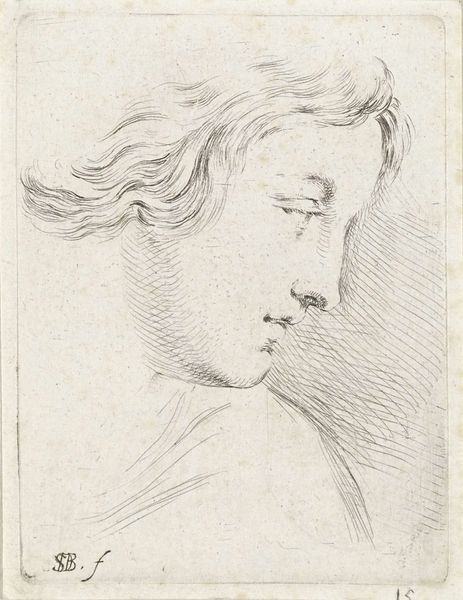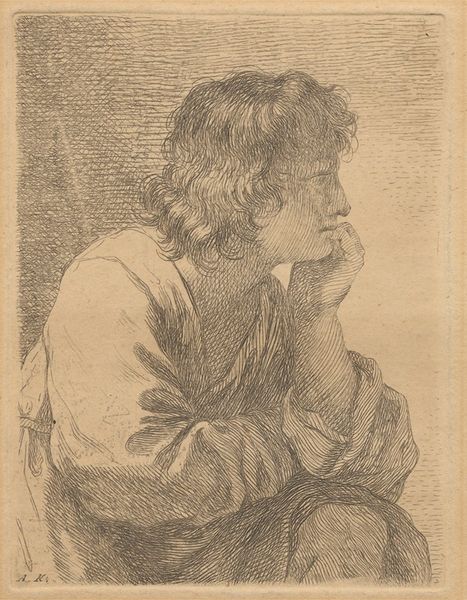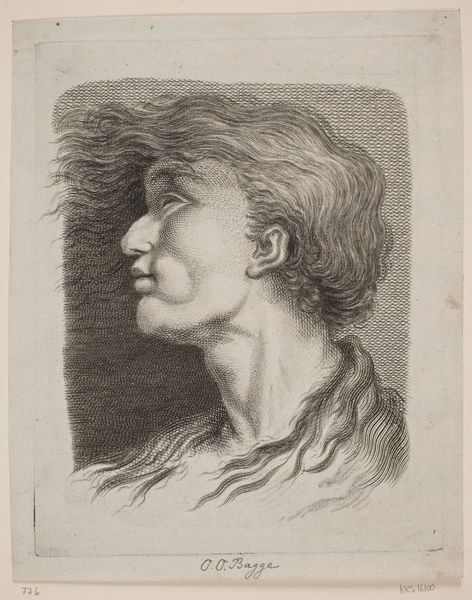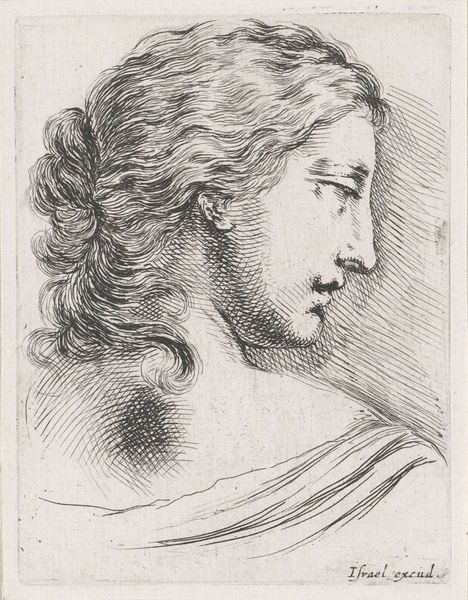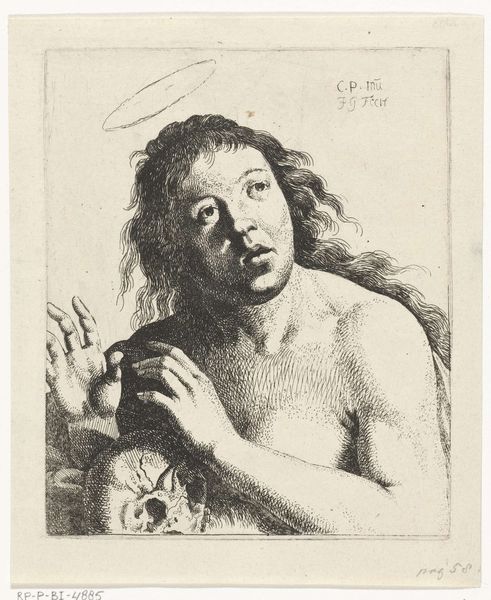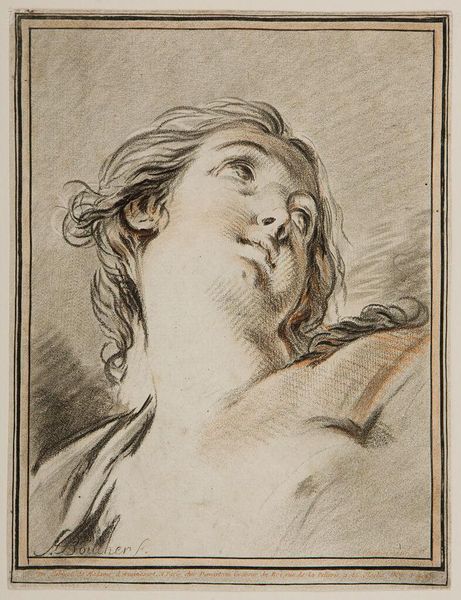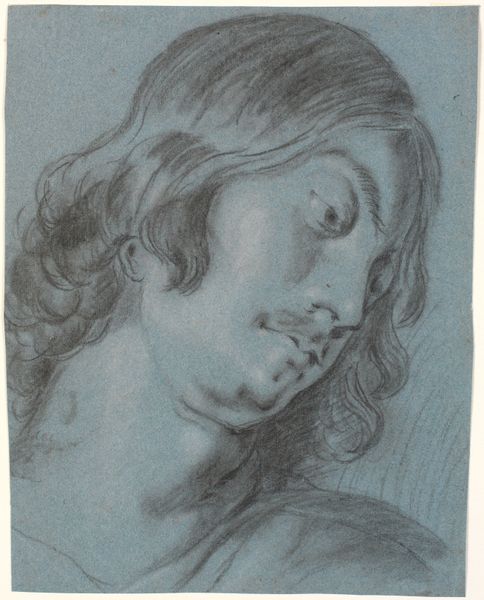
print, etching, engraving
#
portrait
#
baroque
# print
#
etching
#
figuration
#
history-painting
#
engraving
Dimensions: height 126 mm, width 78 mm
Copyright: Rijks Museum: Open Domain
Editor: Here we have François Eisen's "Bust of a Young Man," an engraving and etching made sometime between 1705 and 1778 after a work by Rubens. It’s striking how the man's gaze is directed upwards, conveying a sense of yearning. What can you tell us about the context of such a piece? Curator: Well, prints like these were integral to the art world’s economy and culture, circulating images of admired paintings. Rubens, though not the direct author, lends credibility to the image. This print reflects the market demands, specifically how Baroque ideals shaped preferences for dramatic and idealized figures. Where do you think it would be consumed? Editor: Probably by art students, maybe? To study form or practice their engraving skills? Curator: Exactly. Dissemination was critical. How does its function as reproduction impact its meaning and status? Do you see it as holding equal importance as a painting of the same period? Editor: That's an interesting question! I suppose it was more accessible. Was it intended to elevate or democratize the artistic experience? Curator: Both, perhaps! Making art more accessible while simultaneously reinforcing a certain canon, which we see with the name recognition afforded by associating it with Rubens. What power structures were at play when Eisen decided to adapt and reproduce Rubens’s image? Who was served by these reproduction engravings? Editor: It certainly gives a new appreciation for the role prints played back then. It wasn't just about individual expression, but a dialogue about who got to participate in art, either as a consumer or a creator. Curator: Precisely. Reflecting on it now, one understands art production wasn't an isolated practice but rather an engagement within intricate socio-economic networks and existing visual languages.
Comments
No comments
Be the first to comment and join the conversation on the ultimate creative platform.
